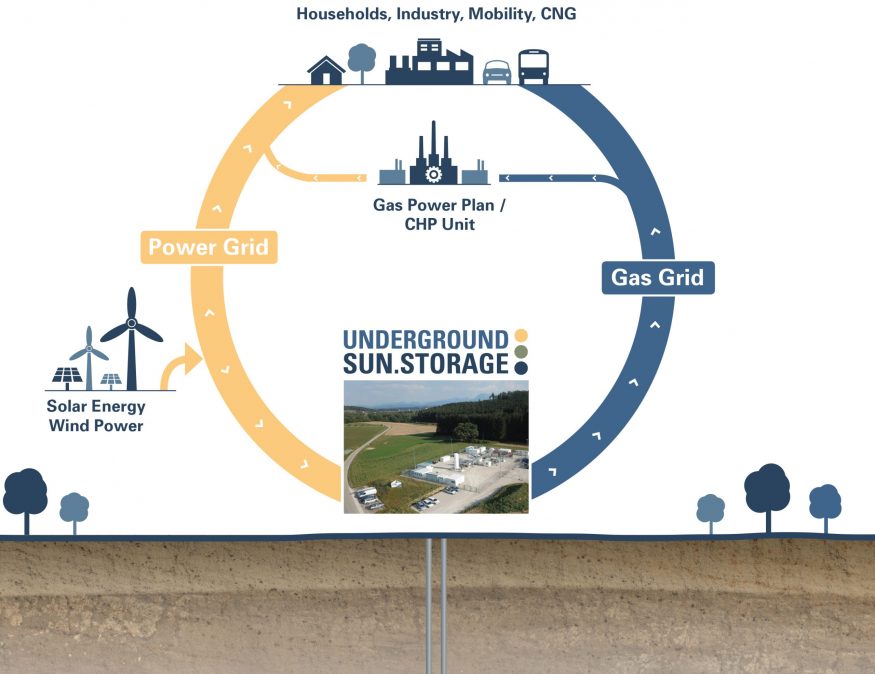- Our DNA
- Innovation Lab
- Publications
- Energy Transparency
- Press Corner
- Events
- Contact
- Subscribe
- Membernet
- My account
- Search
- Follow us at LinkedIn
- Follow us on Twitter
- Follow us on Instagram

Harvesting, storing and supplying solar energy: an unprecedented pilot project run by RAG Austria AG has tested this groundbreaking approach to energy production and storage.
It demonstrated the storability of wind and solar energy in existing natural gas reservoirs on large scale by transforming it into hydrogen using electrolysis.

With this project it was possible for the first time to gain actual interdisciplinary insight into the storage of hydrogen in a subsurface gas storage with the inclusion of an actual field test.
This project allows the storage of solar energy during the summer to be injected back into the grid during winter when demand increases. Therefore, it offers a solution to the challenge of storing intermittent renewable energy.
The role of such facilities and their enormous storage capacity in the energy system of the future has changed significantly, since they can be used to store and balance out seasonal supplies of renewable energy. The results enable similar investigations for many other storage facilities, all over the world.
In the next step, a project for storing 100% hydrogen is in preparation.





































































